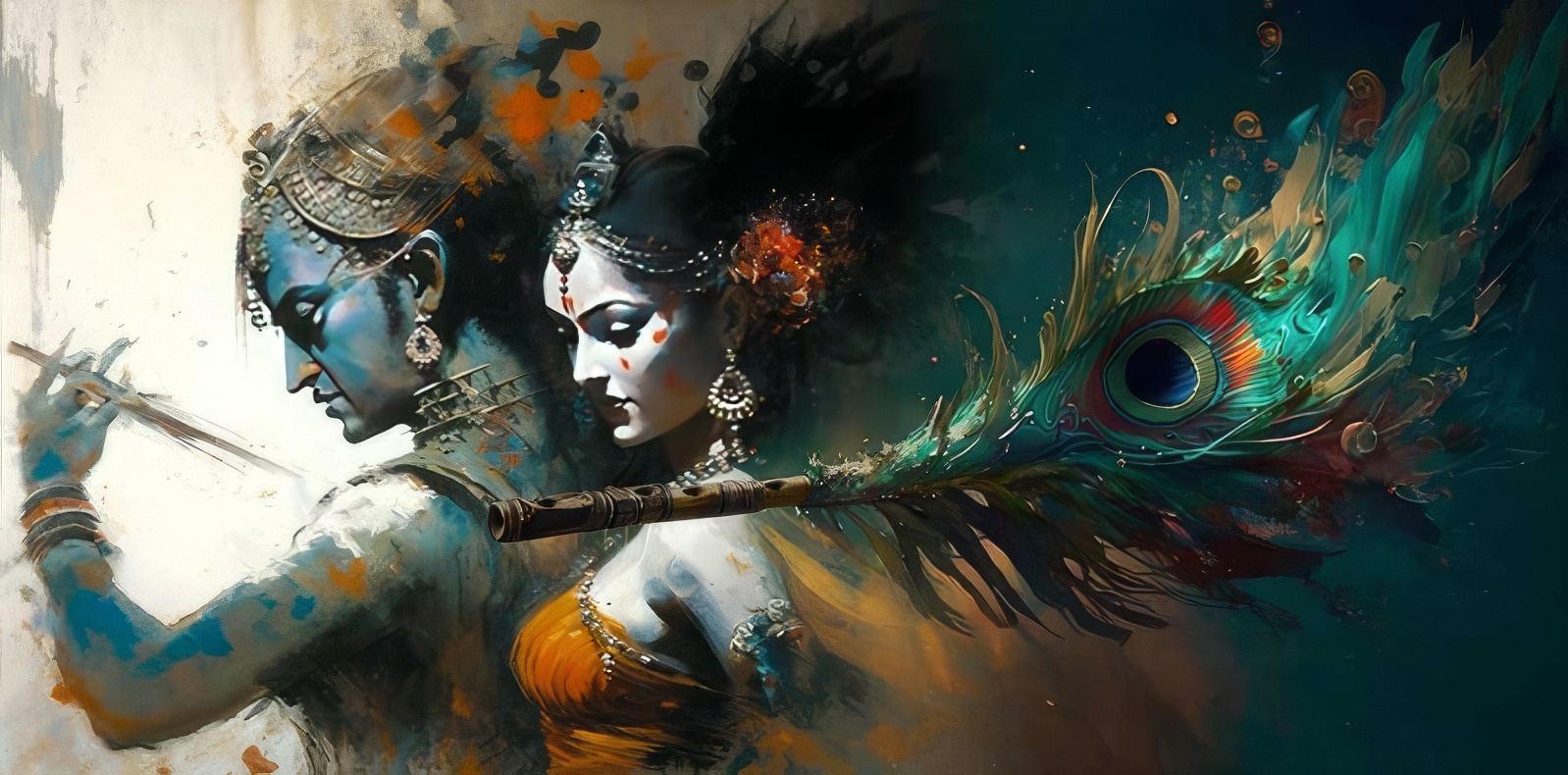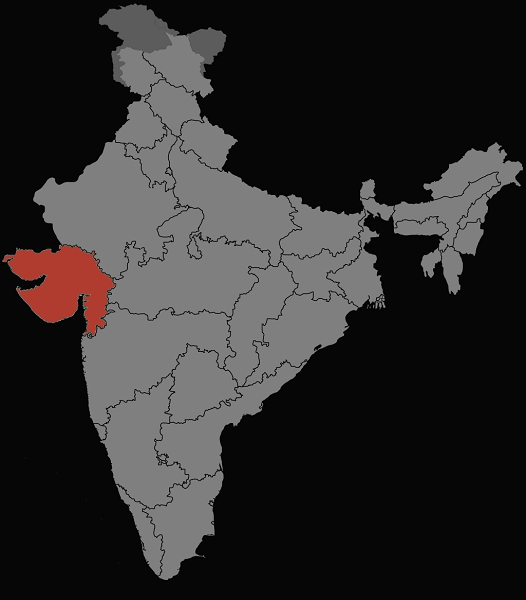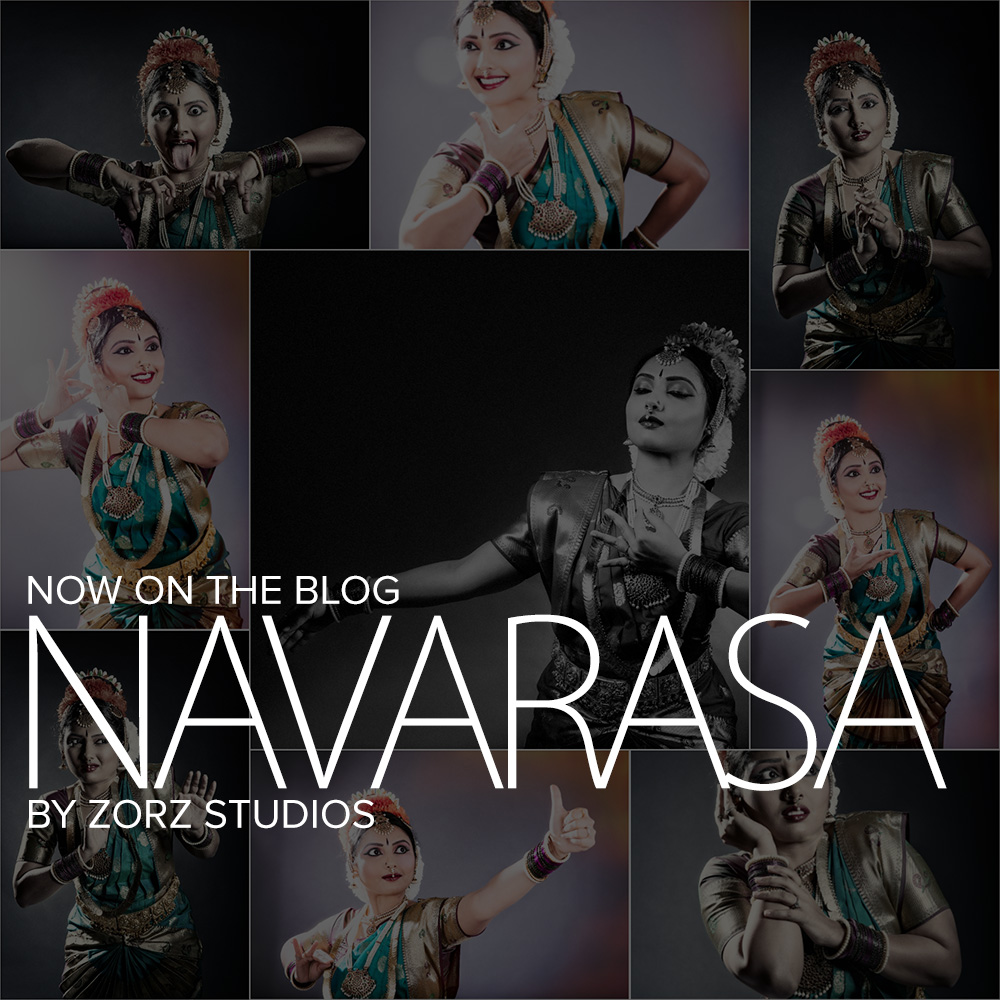Jai Ho! I have my first Indian wedding video for you! I mean, it’s not my studio’s first wedding video, but for this Gujarati Indian wedding, the couple had already hired a photographer and asked if I could just do a video. There was A LOT to unpack during three days of coverage. I have it all for you, captured by one hyper guy with three cameras, along with fun facts!
This year is seeing so many video projects added to my primary photography business… I’ve just posted my first family comedy movie, preceded by a cool commercial promo, my first Airbnb video listing, my first private boudoir music video, and an exotic performance video. Then, my wife and I also did a photo/video for our first destination wedding in Mexico together.
In general, I happily default to a creative photographer role, but since my studio offers both, I have Lara do a video for the jobs requiring only one videographer. Although I sometimes briefly switch hats with her, I haven’t filmed an Indian wedding all by myself yet. I was actually thrilled to learn that Radhika and Rishi had already found a wedding photographer and just needed to document all the fun activities on video! Yass to that!
Well, strictly speaking, working at a Gujarati Indian wedding alone could be either boring or challenging. Boring—if you just use one static camera during the long ceremonies or reception performances. Challenging—if you don’t like boring stuff and mount one static camera, use a second camera for a b-roll, then spend extra time editing and mixing two footage instead of one.
I took the challenging path, mounting my second camera on a gimbal with a wide lens and sticking it everywhere I could. I also used a drone for a few flybys during the wedding ceremony. So, let’s dive in!
Gujarati Indian Wedding
A Gujarati Indian wedding is a vibrant and joyous celebration that showcases the rich cultural heritage of the Gujarati community, which hails from the western Indian state of Gujarat. Known for its grandeur, hospitality, and traditional rituals, a Gujarati wedding is a multi-day affair filled with colorful ceremonies, lively music, sumptuous food, and heartfelt celebrations.
Gujarati weddings are steeped in age-old customs and traditions that are deeply rooted in the cultural fabric of the community. These weddings are a beautiful blend of religious rituals, family involvement, and community participation, creating an atmosphere of love, unity, and festivity.
A Gujarati Indian wedding is not just a union of two individuals but also a coming together of families and communities. It is a time of celebration, joy, and the creation of everlasting memories. The love, togetherness, and cultural richness that permeate every aspect of the wedding make it a truly special and unforgettable event.
I covered one other stylish Gujarati Indian wedding in Philadelphia back in 2015, which also spanned several days but had a more urban chic feel. As for the records, my longest Indian wedding was shot in 2017 in India across 450 miles of central and north-western states. My photography spanned 6 days of beautiful rituals, fashionable celebrations, and cultural events! This was the last of five weddings I shot in incredible India, and I miss going back…
Day 1
Garba (Gujarati Dance with Sticks)
The first day of a Gujarati Indian wedding festivities is dedicated to the Garba, a vibrant and energetic Gujarati dance form. The Garba typically takes place in the evening and serves as an icebreaker for both families and friends to come together and celebrate the joyous occasion. The venue is adorned with colorful decorations, vibrant lights, and beautiful drapes, creating a festive atmosphere.
The day begins with the arrival of the bride and groom’s families at the venue. The women wear traditional Gujarati attire such as chaniya cholis (a colorful, flared skirt) paired with ornate blouses, while the men opt for kurta-pajamas or traditional Gujarati attire called kediyu. The guests also dress in traditional attire, adding to the visual splendor of the event.
As the celebrations begin, a decorated stage is set up for the musicians and singers who will lead the Garba dance. The musicians play traditional folk instruments like the dhol, tabla, and harmonium while the singers enchant the crowd with melodious Gujarati Indian wedding songs. The music sets the rhythm and pace for the Garba dance.
The Garba dance is performed in circles, with participants clapping their hands and moving in sync with the rhythmic beats. The dance steps are lively and involve intricate footwork, twirls, and hand movements. The dancers often hold colorful dandiyas—small wooden sticks—in their hands, which add an additional element to the dance. The dancers form concentric circles, rotating and switching partners as the dance progresses.
Throughout the Garba, there are breaks for traditional Gujarati snacks and refreshments like fafda, jalebi, dhokla, and masala chai. These delicious treats add to the festive ambiance and provide a moment for guests to replenish their energy.
The Garba continues late into the night, with the enthusiasm and energy of the participants escalating as time passes. The vibrant colors of the costumes, the rhythmic beats of the music, and the infectious joy in the air create a mesmerizing experience for everyone involved. The first day of a Gujarati Indian wedding festivities sets the tone for the days to come, bringing families and friends closer together in celebration.
Day 2
Vidhi (Offerings and Prayers)
On the second day, the solemn occasion of Vidhi takes center stage featuring offerings and prayers, typically happening early mornings. Venues adorned with flower arrangements, rangoli (intricate designs done with colored powders), and important religious symbols create serene atmospheres.
The bride’s family begins proceedings by performing a puja (prayer ceremony) to request blessings from ancestors and deities. While guided by priests, Vedic hymns are recited as family members unite by extending flowers, fruits, and other sacred items to the deities. Traditional Gujarati sweets like laddoos and modaks are often prepared as offerings.
The bride and her close female relatives dress in traditional attire, often wearing sarees or lehengas adorned with intricate embroidery and jewelry.
Similarly, the groom’s family performs puja at their home or a designated venue. The groom, along with his close male relatives, dressed in traditional attire like a sherwani or kurta-pajama. The priest guides them through the rituals, and offerings are made to seek the blessings of the Gods.
Following this ritual, a Gujarati Indian wedding would often include Vidhi ceremonies of Ganesh puja, where families seek Lord Ganesha’s blessings for successful outcomes in every aspect of life. However, among Krishnaites or Vaishnavite traditions, the focus lies on seeking divine guidance from Lord Krishna or Lord Vishnu, who is considered Supreme God, leaving Lord Ganesha as a less central figure.

At Gujarati Krishnaites weddings, couples center their marriage ceremony around receiving divine guidance from the love god Radha who accompanies Lord Krishna throughout his life journey. This marks a new beginning overfilled with love and devotion typically set within intimate marriage ceremonies. A divine union gives rise to cosmic creation, creating harmony in all aspects of life.
The Vidhi ceremony is a beautiful occasion where both families come together in love by exchanging gifts as symbols of acceptance towards each other—these may include clothes, jewelry, sweets, or other meaningful items that deepen bonds between them. Furthermore, this strengthens their willingness to provide the support that represents an everlasting nurturing for couples’ relationships, typically ending at a festive vegetarian meal called prasad—all meaning unity and harmony amidst family members—both new and old—sharing memorable moments of their Gujarati Indian wedding!
Haldi (Shower of Turmeric)
On the same day, the families conduct their Haldi ceremony at home or venue. Pithi is the Gujarati name for the Haldi ceremony. A special paste made of turmeric and sandalwood gets applied on both the bride and groom’s face, arms, hands, and feet separately. Traditionally considered auspicious—this paste is thought to protect them against evil spirits while blessing them with good fortune. A sign of purification before their union, it is also said to bring a natural skin glow.
This playful ritual provides an atmosphere full of joy, with laughter filling the air and the singing of traditional songs and lively folk dances performed by family members. The ceremony’s bright yellow color represents purity, prosperity, and fertility, which makes it all the more significant.
Once the Haldi ceremony finishes, a ceremonial bath follows wherein couples cleanse themselves of Haldi paste before changing into new and promising clothing to prepare for what comes next in that Gujarati Indian wedding festivities marking new beginnings filled with love and devotion.
The Vidhi ceremony is followed by a festive meal, often vegetarian. Various traditional Gujarati dishes like kadhi, khichdi, shaak, puri, and yummy sweet treats make it undoubtedly delightful for everyone! The meal is shared by all the attendees, fostering a sense of togetherness and unity among the families and guests.
Sangeet (Music Night)
As celebrations continue into the evening, both sides unite once more for entertainment prepared by family members, close friends, and themselves. Referred to as Sangeet, it is an opportunity to exhibit their unique talents while mingling together, engrossed in music, dancing enjoyable skits creating forever-lasting memories that couples can always reflect on.
My couple combined it with Garba.
Day 3
Baraat (Groom’s Procession)
Any time you mention a Gujarati Indian wedding, most people know that the final day is packed with many rituals and cheerful celebrations dedicated to this big union between two families!
The Baraat marks our first stop as we hear of the groom’s family and friends joyously making their way to the wedding spot. This procession is accompanied by blasting music, a firing dance, and plenty of loud celebrations. The groom often rides a decorated horse or arrives in a cool car, warmly welcomed by the bride’s family when he reaches the venue.
Everyone greets each other with flower garlands and places them onto their necks before going ahead with an Aarti ceremony that involves lighting lit lamps on certain ceremonial plates.
The Aeki Beki is one of the most popular games played during this particular ceremony when the bride’s mother playfully hides away one or both groom’s shoes and then demands a ransom from his side for their return! For this Gujarati Indian wedding, the bridal party formed a line during the Vidaai ritual, blocking the couple from leaving in their car after the ceremony until the groom paid that ransom. Laughter ensues as this lighthearted tradition adds an exciting playful element to the already-colorful ambiance!
Another fun moment is called Jaan in some cultures—an enjoyable custom involving playful interaction between the groom and future mother-in-law. At their reception location, upon arrival, it’s traditional for grooms to seek their future mothers-in-law’s blessings by touching their feet respectfully; moms respond cheekily by going after grooms’ noses in jest while they try ducking them. This cheerful ritual signifies the mother’s deep love and marriage of her daughter to a new, equally adoring family where humility and gratitude are prized.
Religious Marriage Ceremony
The religious marriage ceremony after that varies depending on how strict each couple wants it to be based on cultural differences, or religious affiliations held dear, such as Krishnaites weddings worship Lord Krishna and Radha, while others opt for secular ceremonies that follow different faiths.
Antarpaat, a fabric curtain or veil that is used to create a temporary separation between the bride and groom before they come face to face during the wedding ceremony, is a traditional element of a Gujarati Indian wedding that holds cultural and symbolic significance. The temporary separation signifies the transition from their individual lives to their new life as a married couple, reminding them that their union is a momentous and transformative event where they embark on a lifelong journey of love, companionship, and shared responsibilities.
The Antarpaat is eventually lifted or removed. This emotional moment is filled with anticipation, excitement, and joy. It is often accompanied by the recitation of prayers, blessings from the elders, and the showering of flower petals or rice grains as a gesture of good wishes for the couple.
The officiating priest does his bit here by following prescribed rituals outlined in ancient scriptures while reciting mantras representing profound meanings to both partners. It’s time for some serious vows exchange now, where both parties make commitments aloud before exchanging garlands symbolizing their acceptance of one another.
Vidaai (Farewell)
Vidaai carries heavy symbolic significance in a Gujarati Indian wedding. It marks one of those moments where a daughter departs from her parental home. During this solemn ceremony, which every family member knows can be bittersweet, shows both genuine feelings along with compassion between two families hitting the reset button.
Family members send off the bride with tears in their eyes. Traditionally, the bride throws handfuls of rice or flower petals over her shoulder as a gesture of gratitude and appreciation for her parents’ love and upbringing. It is believed to bring prosperity and good fortune to her parental home.
Fun Reception
Finally, festivities transition into a lively reception packed with fun where everyone comes dressed up, captivated by beautiful flower arrangements adorning every corner and sparkling lights everywhere else! Guests watch as the newlywed couple makes a grand entry accompanied by live bands or DJs playing festive music, filling dancers’ hearts with so much joy!
Showered with flower petals and confetti, the couples take center stage, dancing together before marking the beginning of an epic reception characterized by non-stop dancing and merriment, sometimes lasting until dawn! To heighten spirits at a Gujarati Indian wedding, professional dancers and entertainers are sometimes employed. However, with the talent and zeal so intrinsic to South Asians, there is hardly a need for professional outsiders—so many guests are willing to rehearse their own performances! Music varies significantly during receptions, including both traditional wedding melodies, as well as upbeat Bollywood hits that are sure to please all attendees’ preferences.
Throughout the evening’s festivities, delightful food choices alongside local delicacies from India and international options are available for guests comprising vegan and non-vegan dishes along with a wide variety of sweet treats and beverages. Above all else, guests relish everything on offer, savoring every bite they take!
In conclusion, a Gujarati Indian wedding end with a bittersweet moment when both bride & groom bid adieu while receiving regards from their elders that provide blessings for future endeavors. The couples express heartfelt gratitude towards the guests present, praising them for being such an integral part of achieving success on their wedding day.
Click below and enjoy the show!
Final Word
There is a lot to unpack in such special events that span over three or more days! Garba dance ceremonies, Vidhi and Haldi rituals, grand Baraat procession, religious traditions, and celebrations followed by lively receptions! All serve to exemplify the rich cultural traditions of a Gujarati Indian wedding. Besides bringing two souls together, such events bring families together, fostering unique bonds of love, joy, and unity.
Client’s Feedback
Here’s what the couple shared with me after watching:
Credits
Venue: The Meadow Wood Manor, @themeadowwood
Event coordinator: NP Events, @npevents
Decor: Nirali Decor, @niralidecor
Priest: Aravind Mehta
Hair & makeup: Allison Cortes of Almari Beauty, @almari.beauty
Bride’s wedding outfit: Aso Palav, @asopalav
Groom’s wedding outfit: Rang De Posh, @rangdeposh
Saffa Tying: Turban Tying NY, @turbantyingnyc
Catering: Indie Gala Catering, @myaarzu
Cake: Palermos Bakery, @palermos.bakery
DJ: Party With Luxe, @partywithluxe, @djgauravsood
Henna artist: Ashlesha, @henna_by_ash_nj
Photography: Nachi Sheel Photography, @nachisheel
Cinematography: Zorz Studios, @zorzstudios
Behind the Scenes
Not really behind the scenes, but a set of my IG reels that I shared during the 3 days of this fun Gujarati Indian wedding. For a glimpse of me working during the Haldi ceremony, check out the very end of this video.








